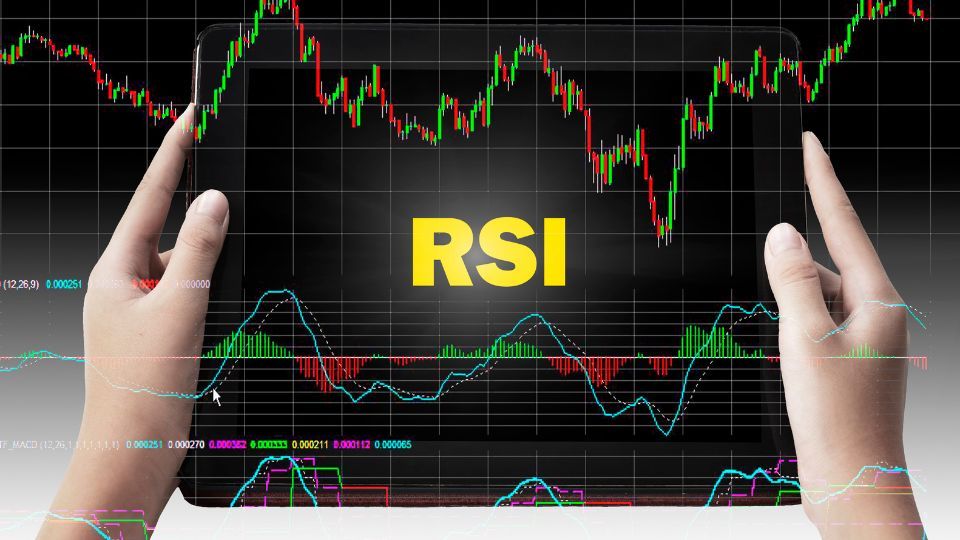Monday Mar 18 2024 05:58

14 min

The Relative Strength Index (RSI) is a widely used technical indicator in the field of stock trading. Developed by J. Welles Wilder Jr., the RSI helps traders identify overbought and oversold levels in a stock's price.
This article aims to provide a comprehensive understanding of the RSI, its calculation, interpretation, and its significance in trading.
The RSI is a momentum oscillator that measures the speed and change of price movements. It oscillates between 0 and 100, with values above 70 indicating overbought conditions, and values below 30 indicating oversold conditions. Traders use the RSI to determine potential reversal points and generate buy or sell signals.


Join the 100.000s that have made markets.com their home for trading. Learn about trading as you grow your portfolio.
More power in our platforms
We currently cannot accept clients from your country. If you have received this message in error, please contact our support team at support@markets.com.
Contact Support
The RSI is calculated using a formula that compares the average of the up periods to the average of the down periods over a specified time period. The detailed steps for the calculation are as follows:
Where RS is the average of the up periods divided by the average of the down periods. The time period used for the calculation is typically 14 days, but it can be adjusted based on the trader's preference.
Interpreting the RSI involves understanding the different levels and their implications. When the RSI is above 70, it suggests that the stock is overbought and may be due for a price correction or reversal.
Conversely, when the RSI is below 30, it indicates that the stock is oversold and may be due for a price bounce or reversal.
Identifying overbought and oversold levels in the RSI is crucial for traders. When a stock is overbought, it means that buying pressure has pushed the price to unsustainable levels, and a price correction or reversal may occur. Traders can take advantage of this by selling their positions or entering short positions to profit from the expected price decline.
Conversely, when a stock is oversold, it means that selling pressure has pushed the price to unsustainably low levels, and a price bounce or reversal may occur. Traders can take advantage of this by buying the stock or entering long positions to profit from the expected price increase.
It is important to note that overbought and oversold conditions in the RSI do not guarantee an immediate price reversal. Traders should use other technical indicators and analyse the overall market conditions to confirm their trading decisions.

The RSI can be used in various trading strategies to generate buy or sell signals. Here are some effective strategies that traders can employ:
RSI divergence occurs when the price of a stock makes a new high or low, but the RSI fails to confirm the move. This can indicate a potential reversal in the price trend. There are two types of RSI divergence: bullish and bearish.
Bullish divergence occurs when the price makes a lower low, but the RSI makes a higher low. This suggests that buying pressure is building up, despite the price making new lows. Traders can interpret this as a potential buying opportunity and consider entering long positions.
Bearish divergence occurs when the price makes a higher high, but the RSI makes a lower high. This suggests that selling pressure is building up, despite the price making new highs. Traders can interpret this as a potential selling opportunity and consider entering short positions.
It is important to note that RSI divergence alone is not a sufficient signal to enter a trade. Traders should use other technical indicators, analyse the overall market conditions, and consider other factors such as volume and news events before making trading decisions.
While the RSI is a powerful indicator on its own, combining it with other technical indicators can provide more robust trading signals. Here are some common technical indicators that traders can use in conjunction with the RSI:
By combining the RSI with other technical indicators, traders can increase the accuracy of their trading signals and make more informed trading decisions.
To illustrate the effectiveness of the RSI in generating trading signals, let's look at some real-life examples.
These examples demonstrate how the RSI can help traders identify potential reversal points and generate profitable trading opportunities.

While the RSI is a valuable tool, traders should be aware of common mistakes that can lead to poor trading decisions. Here are some mistakes to avoid when using the RSI:
By avoiding these common mistakes, traders can maximise the effectiveness of the RSI and make better trading decisions.
For traders who are interested in further learning and mastering the RSI, here are some recommended resources:
By exploring these resources, traders can deepen their understanding of the RSI and enhance their trading skills.
The Relative Strength Index (RSI) is a powerful technical indicator that can help traders identify potential reversal points and generate profitable trading opportunities. By understanding the calculation, interpretation, and significance of the RSI, traders can develop effective trading strategies and make informed trading decisions.
However, it is important to use the RSI in conjunction with other technical indicators, consider market conditions, and avoid common mistakes. By doing so, traders can maximise the effectiveness of the RSI and improve their trading performance.
To master the RSI, traders are encouraged to further their learning through books, online courses, technical analysis websites, and trading forums. By continuously expanding their knowledge and skills, traders can stay ahead of the game and achieve success in the dynamic world of stock trading.
Open a trading account now and start trading CFDs!
“When considering “CFDs” for trading and price predictions, remember that trading CFDs involves a significant risk and could result in capital loss. Past performance is not indicative of any future results. This information is provided for informative purposes only and should not be considered investment advice.”
Asset List
View Full ListLatest
View all
Thursday, 17 April 2025

7 min

Wednesday, 16 April 2025

5 min

Tuesday, 15 April 2025

5 min